10 Iconic Floral Still Lifes You Need to Know
Flowers have long been a central theme in still-life painting. Each flower carries its own symbolism. For example, they can represent innocence,...
Errika Gerakiti 6 February 2025
A few years ago, the art world celebrated the complete restoration of Johannes Vermeer’s Girl Reading a Letter at an Open Window. One of the discoveries made during the restoration works was a (later overpainted) Cupid painting on the wall in the background. As a result, a re-interpretation of the work was necessary. This is not a rare example of a painting within another painting. For obvious reasons, depictions of other artwork can be seen in the paintings of the interiors. They were also a way of showing off the commissioner’s impressive art collection. Sometimes artists used it as an homage to their inspirations and influences. Let’s take a look at some examples in Western art history. It’s always fun to try to identify some of those paintings within paintings.
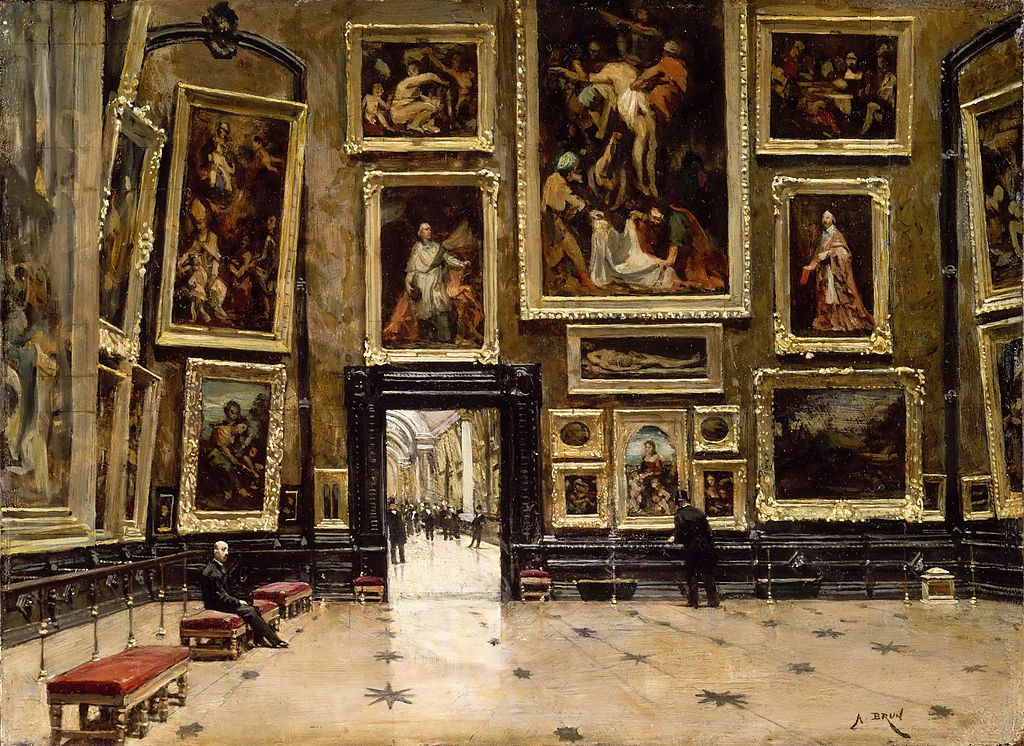
Genre painting was prominent in Northern European countries, and especially during the Dutch Golden Age. We already mentioned Vermeer, but many artists used paintings to add more meaning to their depictions of everyday life. Samuel van Hoogstraten (1627-1678) put images within many of his paintings. For example, in The Slippers, he included a piece from a contemporary and rival artist, Gerard ter Borch (1617-1681). The woman in a silver satin dress turning her back on us is part of Gerard ter Borch’s work Gallant Conversation.
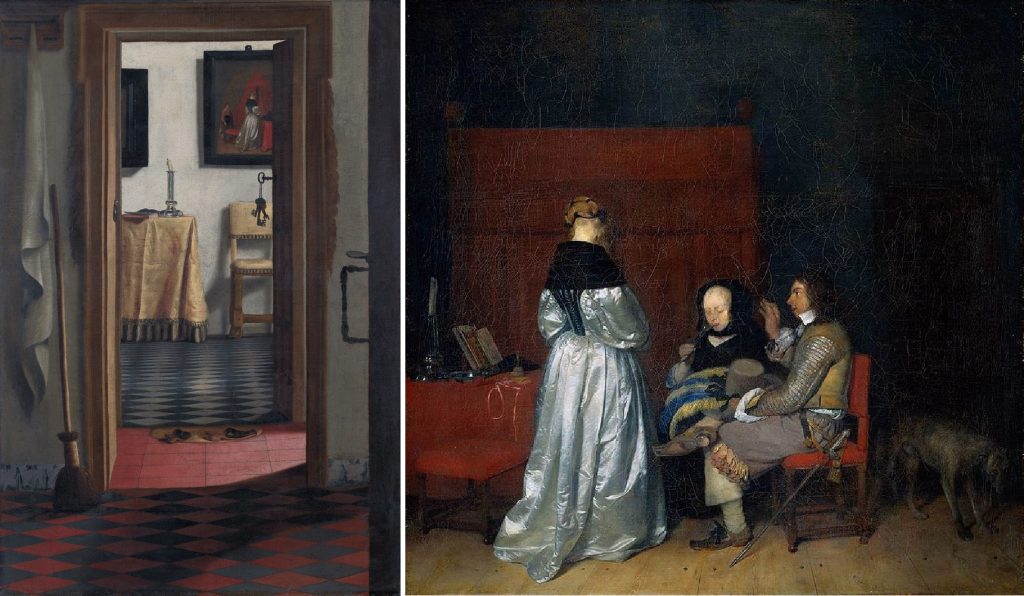





Royalty and aristocracy have always been linked to the art world. Consequently, this relationship became a way of projecting power and status through ambitious portraits and collections. The quality of someone’s acquisitions gave them prestige. To show off, many started to demand depictions of their galleries in the Netherlands. One of them was Archduke Leopold Wilhelm who owned about 1400 paintings! In the painting below we can only see 51 Italian scenes. Can you find Judith with the Head of Holofernes by Carlo Saraceni, or Cain Kills Abel by Bartolomeo Manfredi? The collection was so vast, that there are five other depictions of it, all by David Teniers.
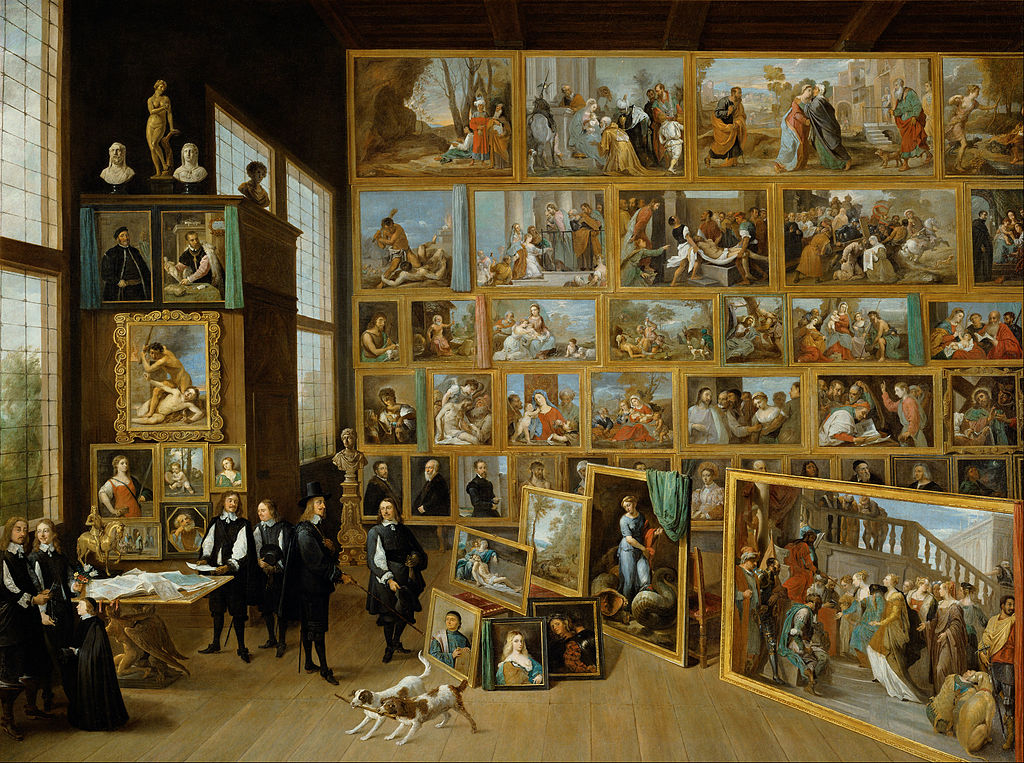





Another impressive example of this type of painting is the Tribuna of the Uffizi by Johan Zoffany. It was ordered by Queen Charlotte and Zoffany, who traveled to Florence to see the Grand Duke of Tuscany’s collection. As expected, the gallery contained some of the best Renaissance and Baroque works. For example, there is Titian‘s The Venus of Urbino, a couple of Madonnas from Raphael, and Rubens‘ The Consequences of War. Other names present are Michelangelo, Guido Reni, Annibale Carracci, Correggio, Perugino, and more. He also included a portrait by Hans Holbein.
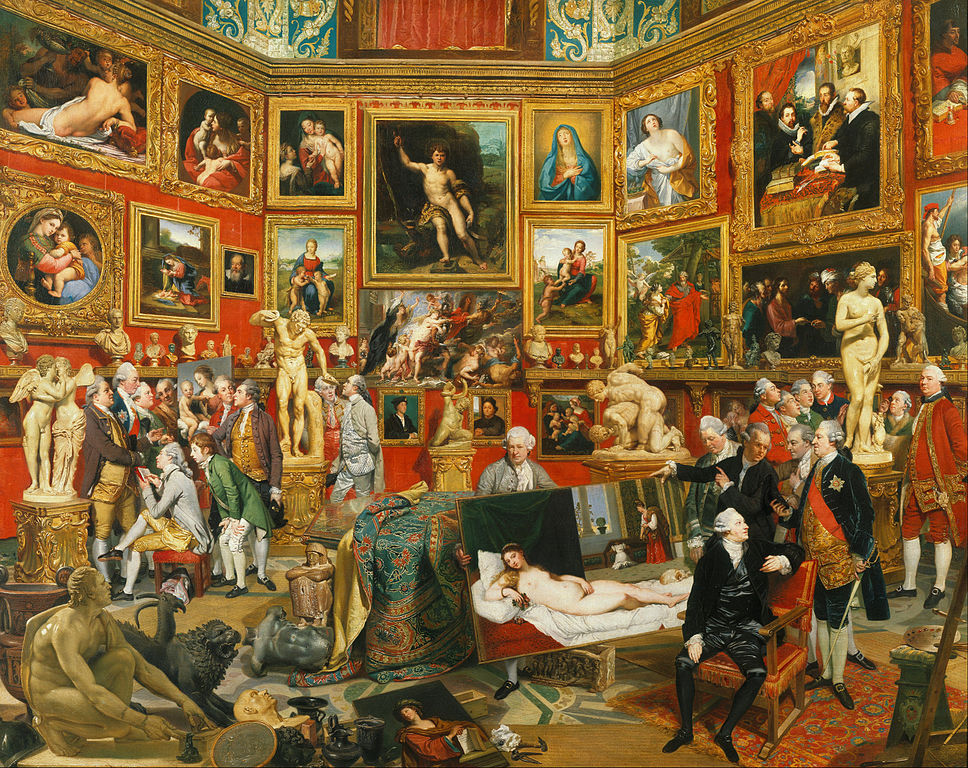





Let’s now talk about the famous Salon in Paris. This annual event in Paris started in 1667. Gradually, the Salon became more and more important. By the 19th century, it was the most prestigious event in the Western art worldand thus it included a lot of artworks. Unsurprisingly, many of the artists depicted the actual Salon, like François Joseph Heim in his work about the Salon of 1824 with Charles X. That year, the famous Vow of Louis XIII by Jean-Auguste-Dominique Ingres was displayed and it is visible in Heim’s work.
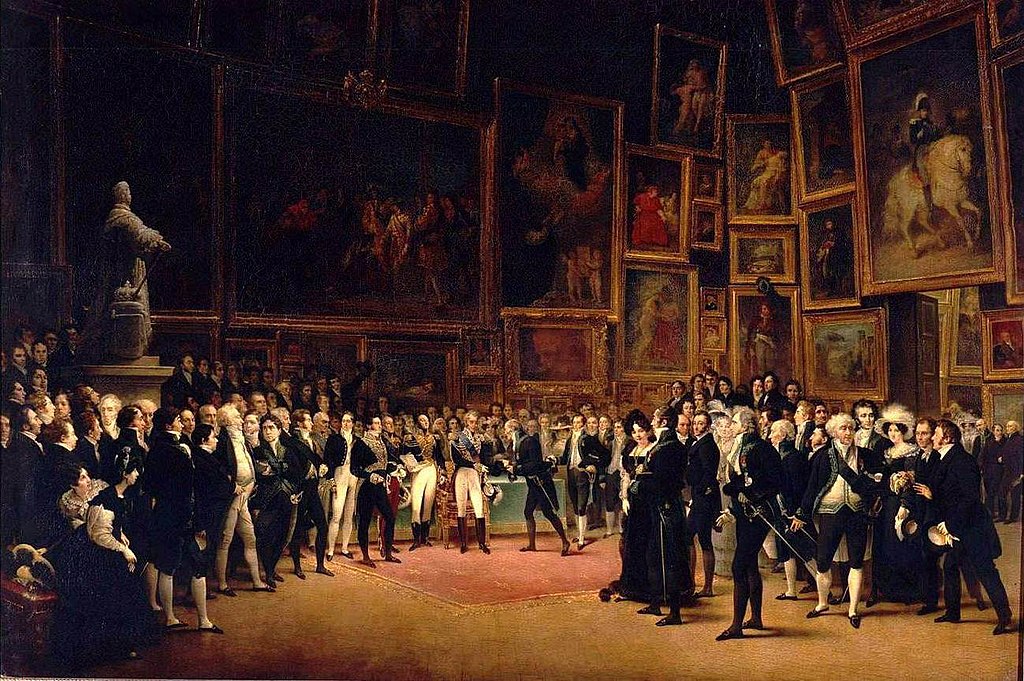





Now, if you thought the previous examples featured many paintings within a painting, wait till you see the following allegories of the senses. It’s a party of meta paintings! What better way to represent the sight than to fill a canvas with as many pictures as possible? Together, Flemish painters and friends Jan Brueghel the Elder and Peter Paul Rubens created a series with this theme.
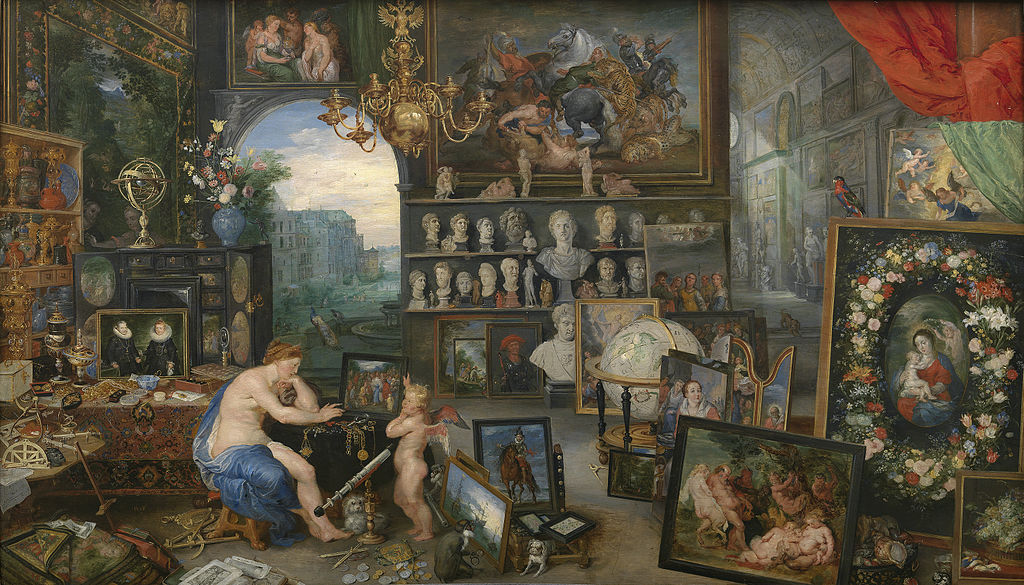





Although another painting from the series shows the sense of taste, it also has paintings! Look carefully at the bottom left corner. Is that a painting within a painting within a painting? Not exactly. It is Cibeles and the seasons within a festoon of fruit, another collaboration of Brueghel, this time with Hendrick van Balen. The painting shows two nymphs and cupids surrounding a (fictional) medallion with a depiction of an offering to Ceres.
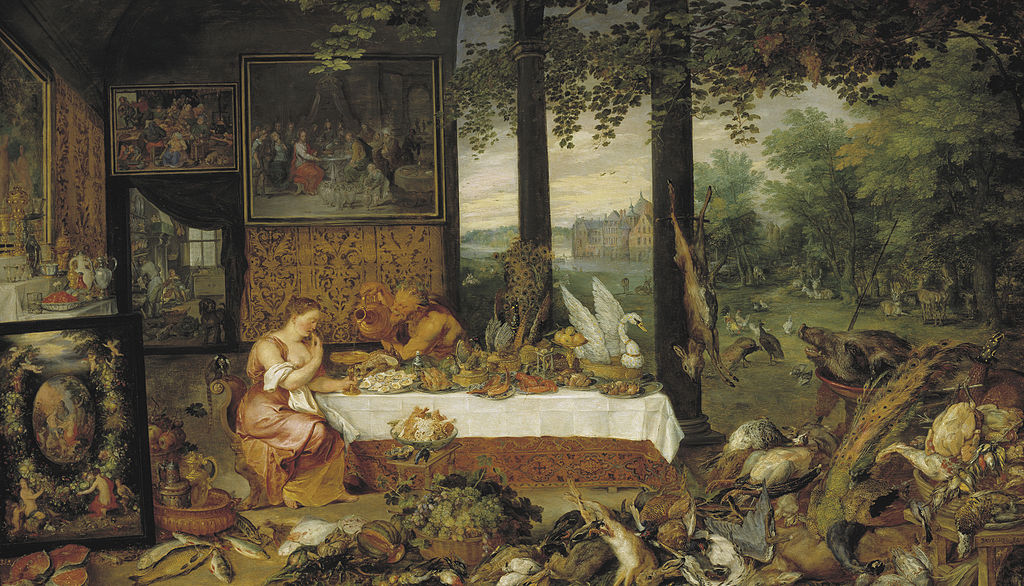





Every artist is influenced by their historical reality, the art they saw throughout their life, and the people they met. Sometimes this is reflected in their technique or style. But sometimes, you literally can see it on the canvas through a painting with a painting. A great example of this is Diego Velazquez‘s famous The Spinners or The Fable of Arachne. It is a scene from the myth of Arachne depicting a contest between her (on the right) and the goddess Athena posing as an elderly woman (on the left). According to Ovid, the mortal woman first decided to weave the myth of the Rape of Europe. If you look at the scene in the back of Velazuqez’ painting, you will see a tapestry with a copy of Titian’s famous depiction of Europa’s myth. Perhaps Velazuqez was encouraged to depict this particular canvas because his dear friend Peter Paul Rubens copied it in 1629.
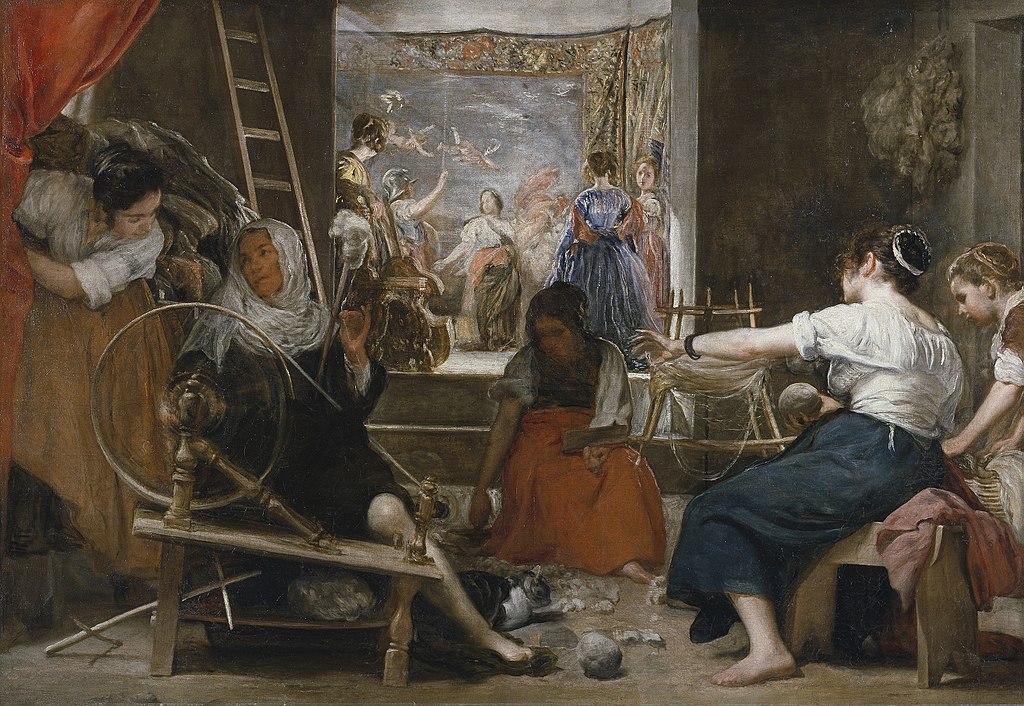





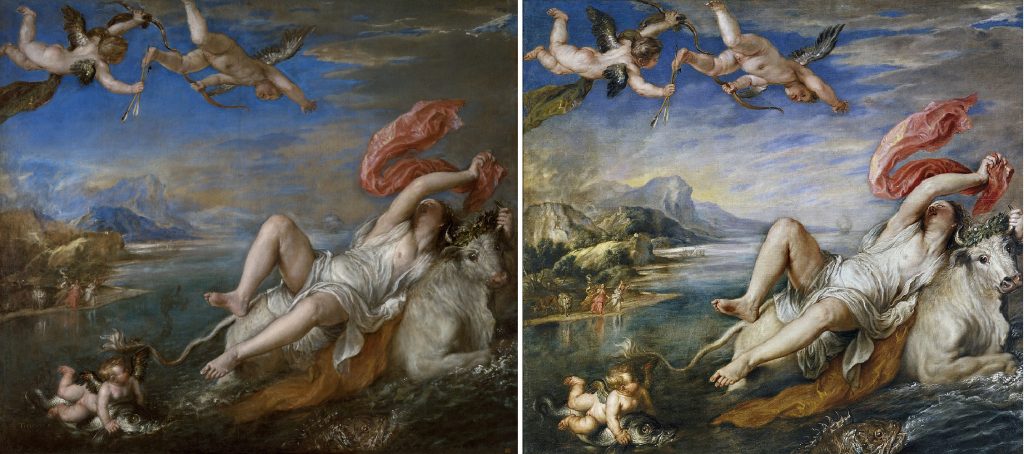





Another way in which artists used paintings within paintings was to include their previous works in new creations. One of of the examples is this self-portrait by Paul Gaugin with his Yellow Christ in the background.
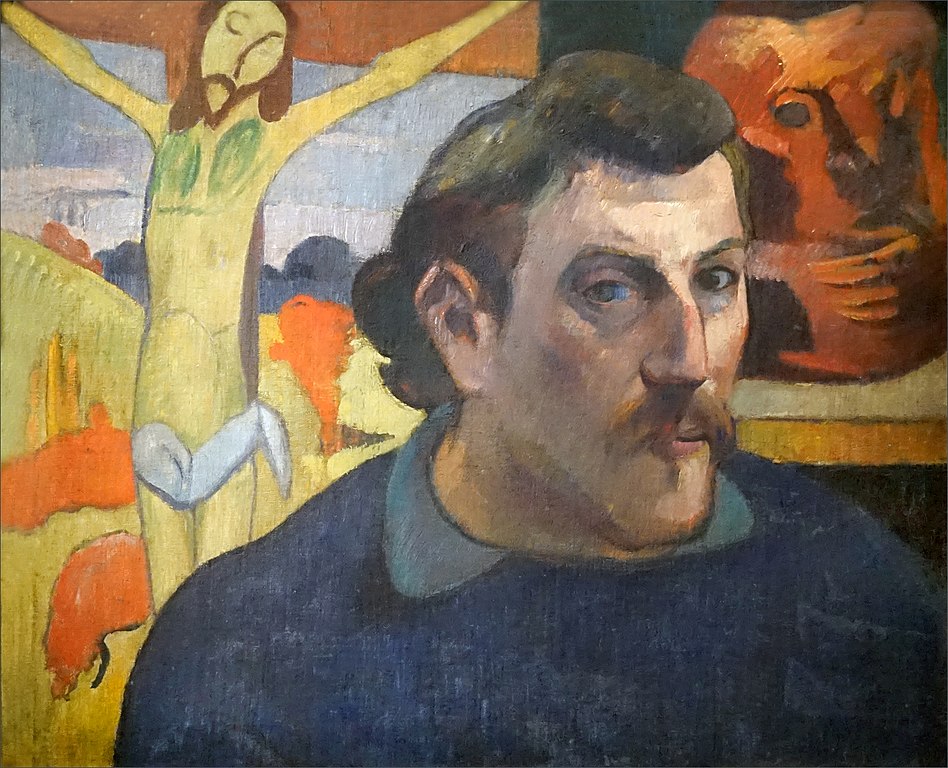





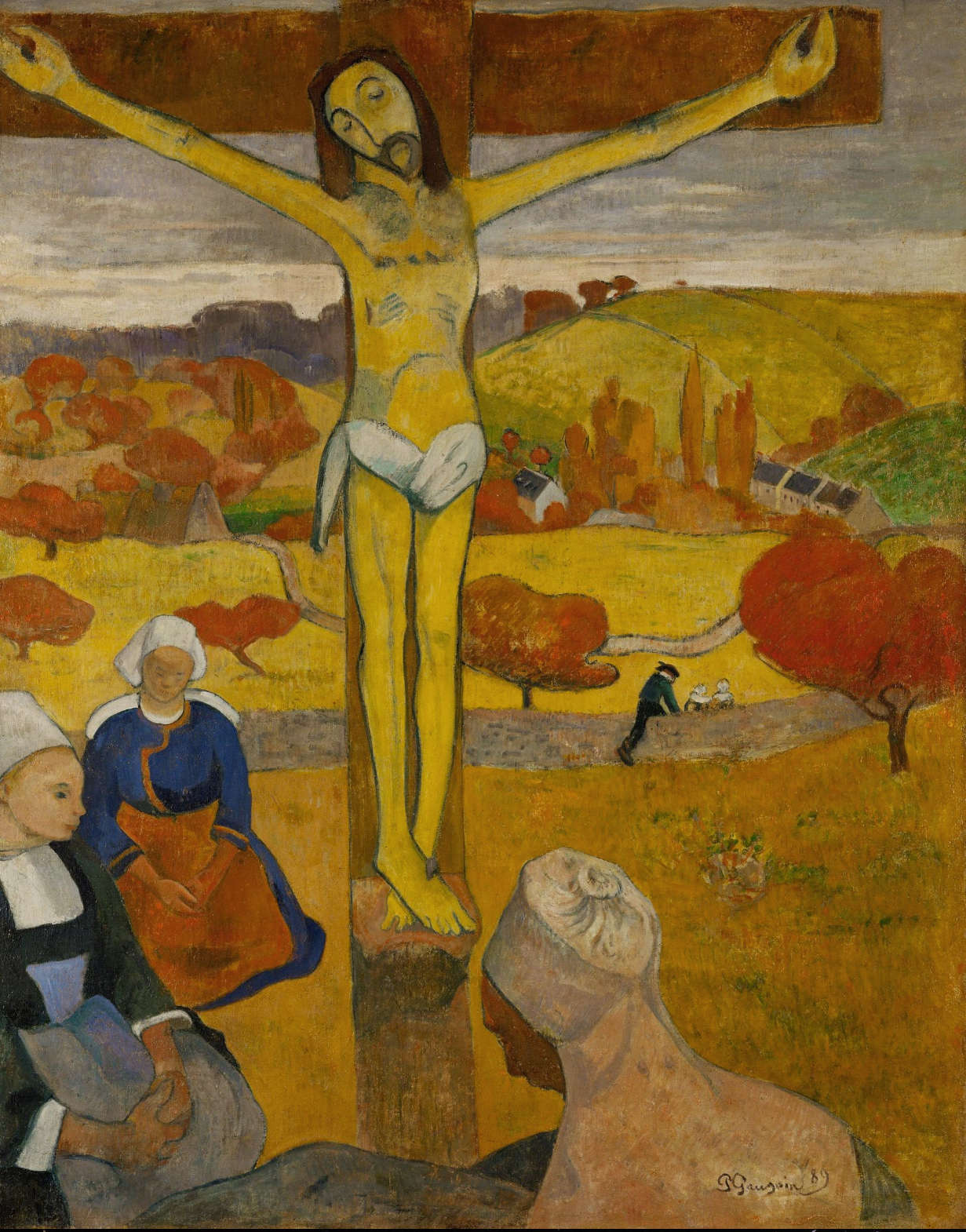





In this category, we can find dozens of self-portraits by female artists. Since women were often excluded from artistic life, those who managed to become an artist often depicted themselves at work or accompanied by their artworks (real or fictional). It was as if they wanted to emphasize their profession – what better way of defying patriarchy than making a portrait of them as artists. Artemisia Gentileschi is an obvious example, but Sofonisba Anguissola, Judith Leyster, Rosalba Carriera, Giovanna Fratellini, and others did the same.
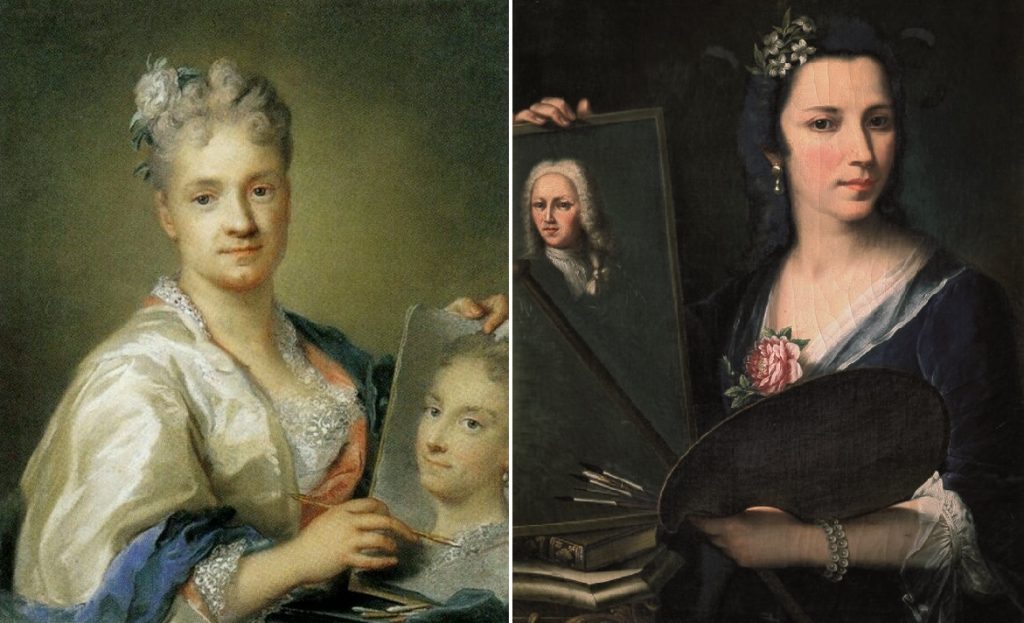





Thijs Weststeijn, The Universal Art of Samuel van Hoogstraten (1627-1678): Painter, Writer, and Courtier, Amsterdam University Press, 2013. Accessed 1 Sep. 2021.
Kristine Susan Woeckener, The Mighty Equine: the Influence of Titian and Rubens on the Equestrian Portraits of Velázquez, 2015, Eagle Scholar. Accessed 1 Sep. 2021.
Beatriz Blasco, Conferencia: Al otro lado del lienzo: mujeres pintoras en la Edad Moderna, Museo del Prado. Accessed: 3 Sep. 2021.
DailyArt Magazine needs your support. Every contribution, however big or small, is very valuable for our future. Thanks to it, we will be able to sustain and grow the Magazine. Thank you for your help!